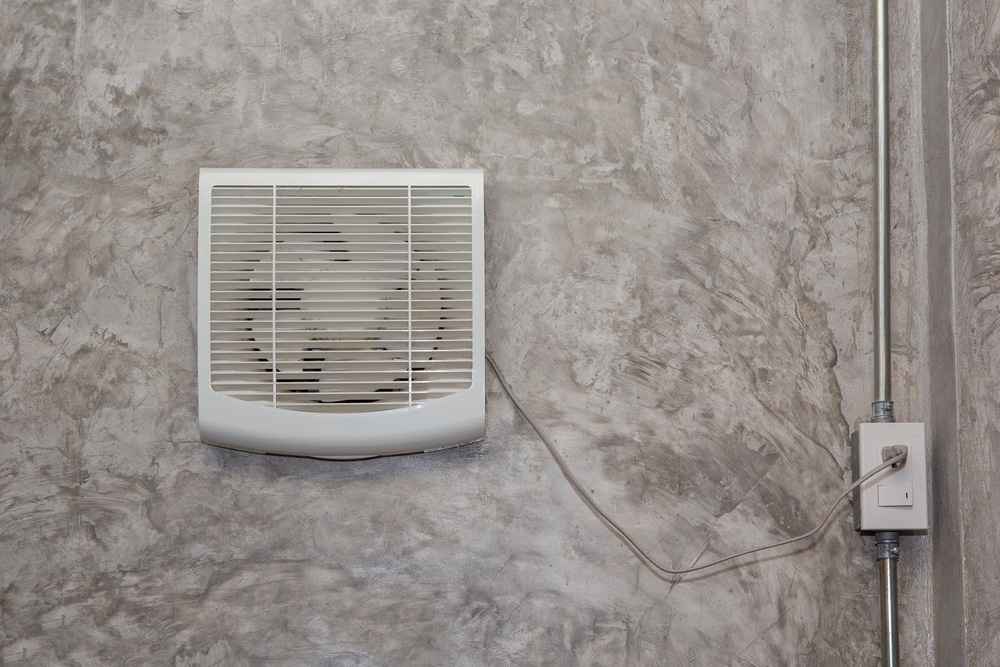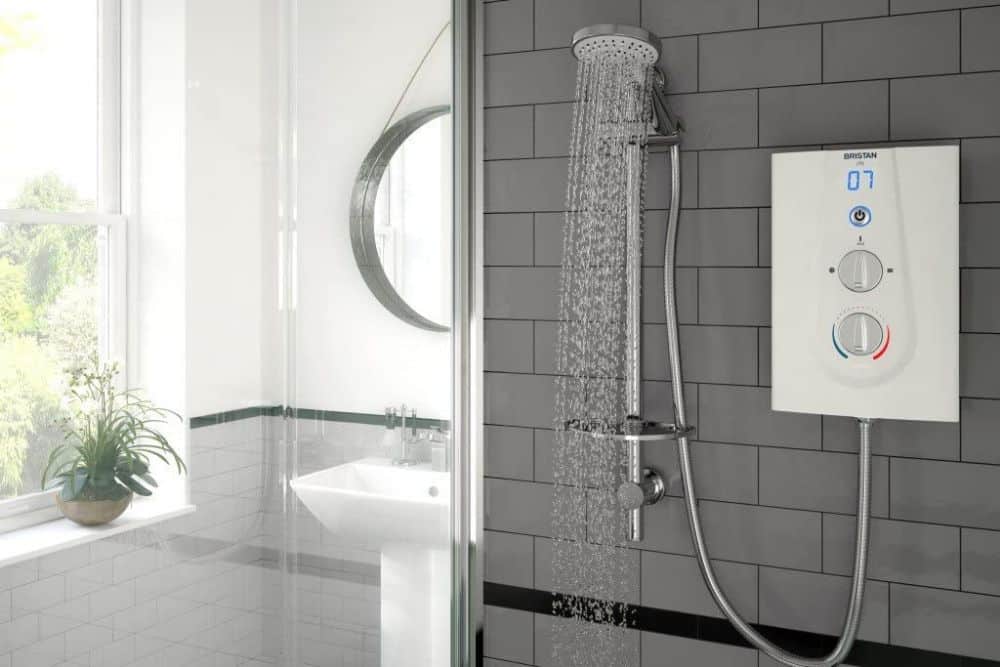Last Updated on
Most bathrooms and kitchens require some form of ventilation to help keep the room structurally sound and safe from the development of mould. While an openable window can be used, extractor fans are the most obvious solution to meet ventilation standards. Even though bathroom extractor fans are commonplace in homes, especially in newer buildings, it is not uncommon to have questions about what they are and how they work. This article answers the question of what is an extractor fan and aims to teach you everything you need to know about the different types, their use, and why bathroom ventilation is so essential.
Extractor Fans Explained: The Basics and More
What Is the Purpose of an Extractor Fan?
The purpose of an extractor fan is to extract stale air, humidity, and steam from a room. Removing stagnant air allows fresh air to take its place, typically from a window or some other form of natural ventilation. In areas with a lot of flowing water, extractor fans are utilised to reduce condensation, prevent potential structural damage, and enhance air quality.
How Does an Extractor Fan Work?
When it comes to airflow, various types of extractor fans exhaust damp air in slightly different ways. However, the basic principle remains the same. An impeller rotates inside the fan to extract air from an area or room. The fan then vents the damp air outside via a duct similar to the one used by a dryer. This process of extraction makes room for fresh air to move in and fill the space.
What Are the Benefits of Using an Extractor Fan?
Aside from ensuring a room meets ventilation regulations, having a kitchen or bathroom extractor fan poses a series of benefits for you and your home:
- Prevent moisture and condensation from building up on walls and other surfaces in a room. Damp surfaces can potentially cause a safety risk and lead to slips and falls.
- Proper ventilation prevents the growth of mould and mildew due to excess moisture. Aside from being unsightly, mould can trigger allergies and other health issues.
- Removes humidity in a room, making it more comfortable for use, particularly in warmer summer months.
- Promotes longevity of bathroom fittings, plaster, and paint, all of which deteriorate at rapid speeds in the presence of constant moisture.
- Help prevent lingering odours in stale air. This is useful in bathrooms and kitchens where strong odours can be commonplace.
Different Types of Extractor Fans
There are four main types of extractor fan models. Each type is designed for a different purpose regarding ducting, but all of the models can be used in a bathroom, kitchen, or utility shed.
Axial Fans
Axial fans suck air inside the fan in an axis motion to create airflow. A pressure difference is created by the fan sucking air into the duct so it can be released outside. Axial fans have a direct connection to the outside through an external wall. The duct run on an axial fan is 1.5 metres or less. Therefore, axial fans are used when air does not have to move a long distance.
Axial fans are the most common type of extractor fan found in homes. They typically have a small size and are quiet to nearly silent volume when in use. Axial fans can easily be installed in a wall, ceiling or mounted directly into a window.
Centrifugal Fans
With centrifugal fans, the air is extracted through the fan’s intake at a right angle. It is then spun thanks to centrifugal force outwards. The impeller sucks air into the duct shaft in a straight line allowing more pressure to be created than an axial fan. This makes centrifugal fans better for longer ducts that require more power for ventilation. Typically, a centrifugal fan is designed for bathrooms with an external wall that is more than 1.5 metres away. The longer ducting range produces a stronger extraction rate thanks to the increased power of the fan itself.
A centrifugal fan is usually installed in the ceiling of a bathroom or a larger kitchen or utility room that requires a higher performance level to provide ample ventilation. They are generally noisier, larger in size, and more expensive than axial fans. If you are looking for a silent extractor fan option, this may not be the best choice for you.
Inline Fans
An inline fan is also installed in a ceiling, but they are less commonly used than other types of extractor fans. This is because inline fans are designed for rooms that are 40 metres or more from an external wall. They are often quiet while in use, and you can expect less heat loss from the ventilation duct thanks to not being close to a vent in an external wall. Due to the longer ducting, inline fans are quite powerful.
Mixed Flow Fans
A mixed-flow fan combines the performance aspects of an axial and centrifugal extractor fan. They have flow aspects similar to an axial fan and the greater pressure difference found in centrifugal fans. Mixed-flow fans are good for kitchens and bathrooms. In fact, they are good for just about anywhere you need extra power and efficient ventilation.
What Size Extractor Fan Do You Need?

Most extractor fans come in two different sizes, 100mm and 150mm. The size number references the size of the internal impeller. Each extractor fan is also labelled with an extraction rate measured in litres per second. The rating alerts you to how powerful the fan’s ventilation will be.
As a general rule of thumb, 100mm fans are good for smaller rooms under 9m2, and 150mm fans are good for use in rooms with a space larger than 9m2. A larger size extractor fan is also good for use in homes with several occupants or possibly only one bathroom that will be used frequently.
Where Should Extractor Fans Be Used?
Extractor fan systems should be used in any room considered to be a wet room. This includes a kitchen, bathroom, or even a utility room, basically anywhere with excess moisture.
When it comes to installation, extractor fans should be installed in a place close to the source of condensation and steam. They should be installed higher on the wall and not near a window. Otherwise, it can prevent fresh air from coming in. Often, installation is recommended above a shower or over a stove.
Does Your Bathroom Need an Extractor Fan?
A bathroom extractor fan can completely change the atmosphere of your bathroom by preventing mould and mildew from developing and releasing steam and humidity, but do you need an extractor fan in your bathroom? Bathrooms are humid and damp compared to other rooms, so an extractor fan is typically recommended, especially if there is not much natural ventilation in the room.
However, some older buildings will not have an extractor fan if there is an openable window in the wet room in question. If you do not have an openable window, an extractor fan is needed to limit condensation.
If a bathroom, kitchen, or other wet room is not properly ventilated, it can lead to health issues that affect your skin and respiratory system. Proper ventilation also prevents rapid wear and deterioration of bathroom paint, plaster, and other accessories, which can be costly and time-consuming to replace.
Are There Building Regulations Pertaining to Extractor Fans?
Aside from being strongly recommended, there are actually building regulations regarding the installation of extractor fans in particular rooms. UK regulations say a bathroom must be ventilated by an extractor fan or an openable window. If the bathroom has a toilet only, a window is enough. However, newer buildings must have an extractor fan if the bathroom also has a shower.
If you live in an older home with no extractor fan system built into the bathroom, you may want to consider adding one regardless of the building regulations. An extractor fan system is often easy to install, and you should be able to find a product that is fairly inexpensive as well. Considering how well an extractor fan prevents mould and reduces excess moisture, we strongly recommend them for use in a bathroom with a shower.
Extractor Fans Made Easy
At this point, you should be able to confidently say you know what an extractor fan is, plus a whole lot more. Whether you were contemplating installing a bathroom extractor fan or possibly installing one in your kitchen or garden shed, you now know how beneficial they can truly be. Extractor fans remove condensation and odour, prevent early onset structural damage and development of mould, and improve air quality, which is good for allergy sufferers and your overall health. So, what do you think? Could you benefit from a new extractor fan over your shower? Or are you using the extractor fans in your house to the best of their ability?
Let us know what you think in the comments below.
Emily is a woman of many talents. She has a B.A. in English and enjoys writing. Emily loves accessorising her home with quality products that not only serve a purpose but also enhance the overall convenience and tranquillity of her living space; there’s nothing like coming home to your own personal sanctuary after a long day! She loves anything that can make life easier or more comfortable—from dishware to furniture to lighting fixtures.



